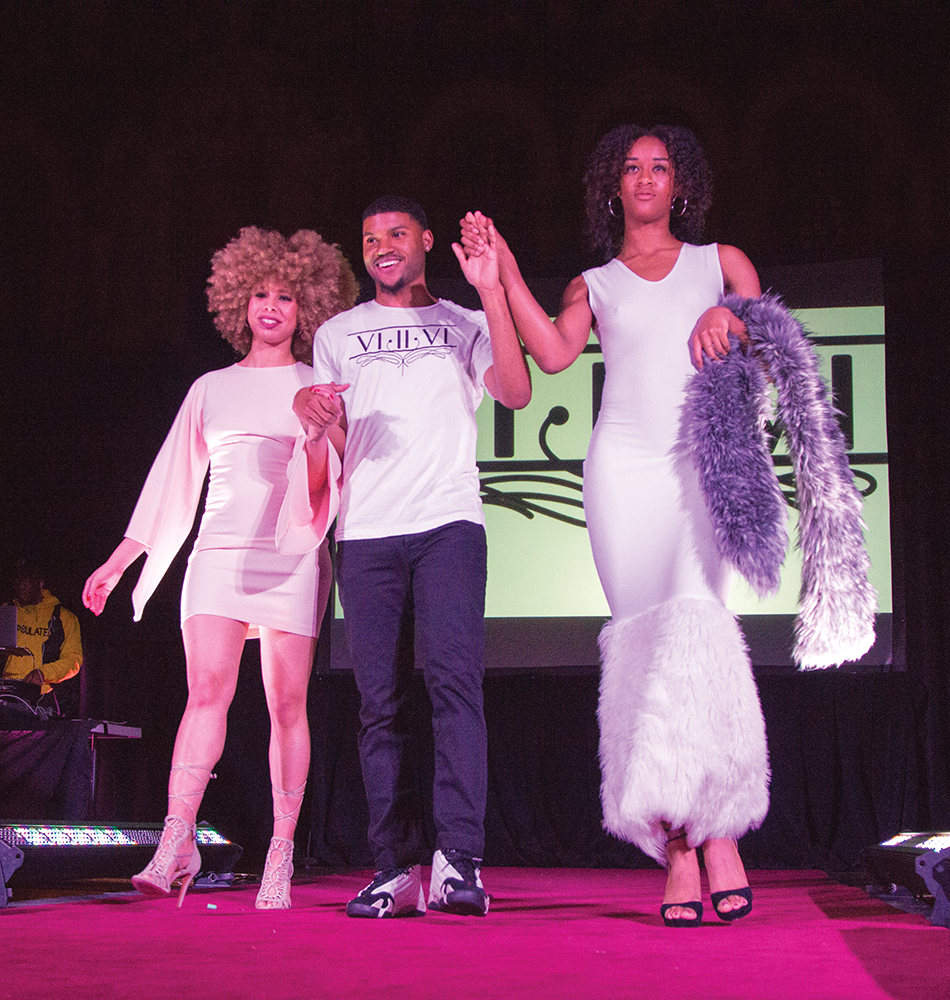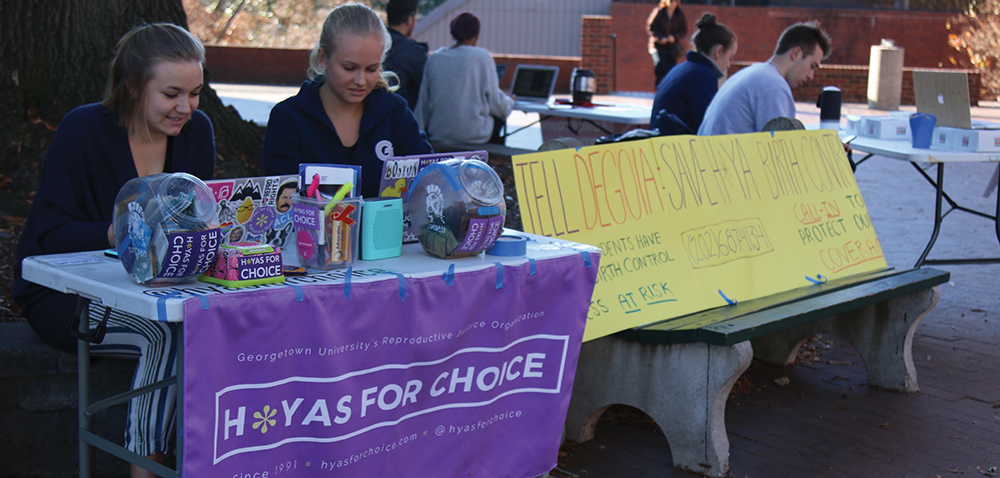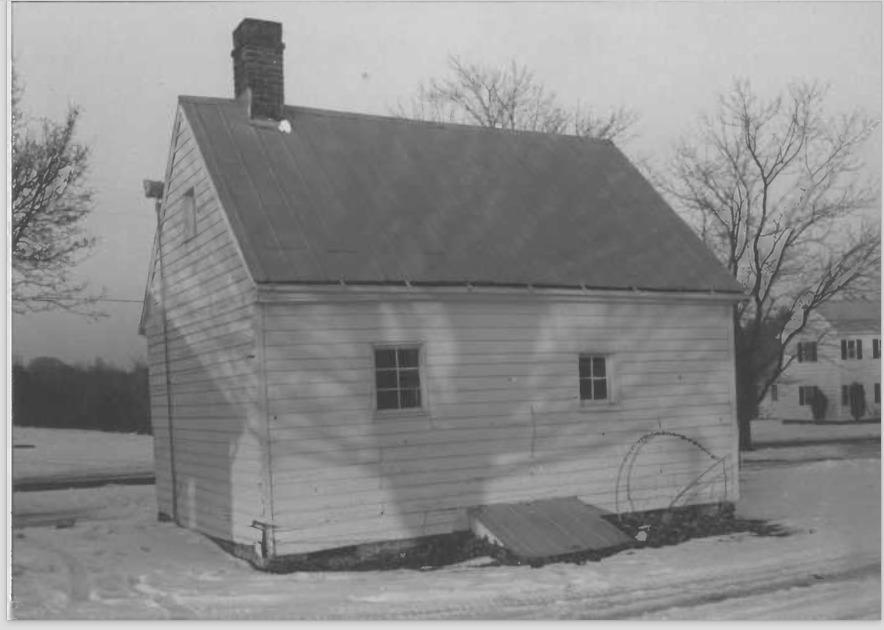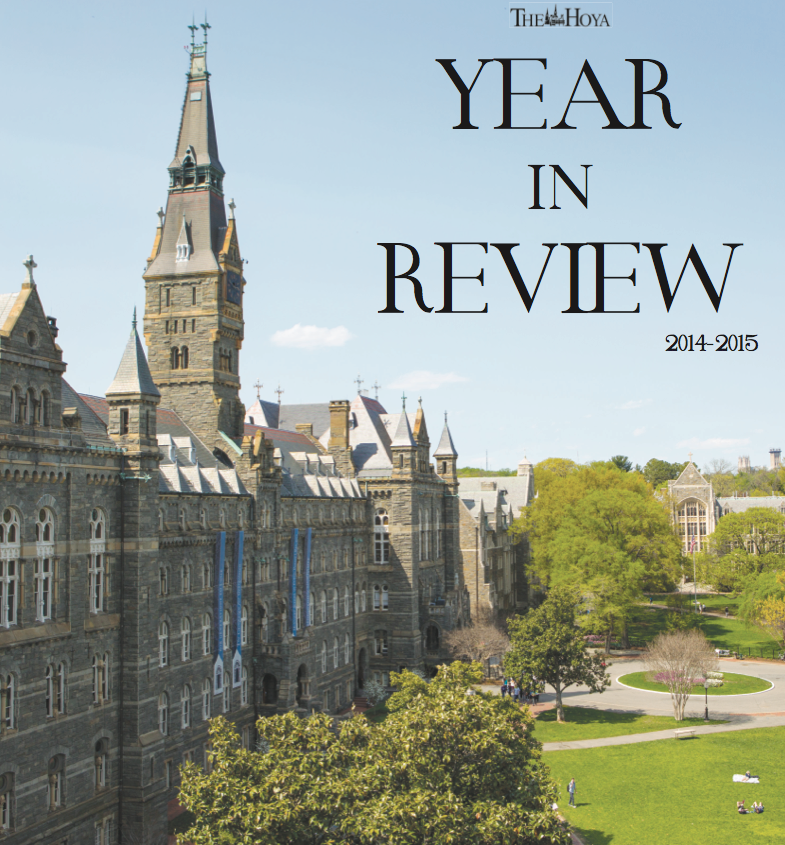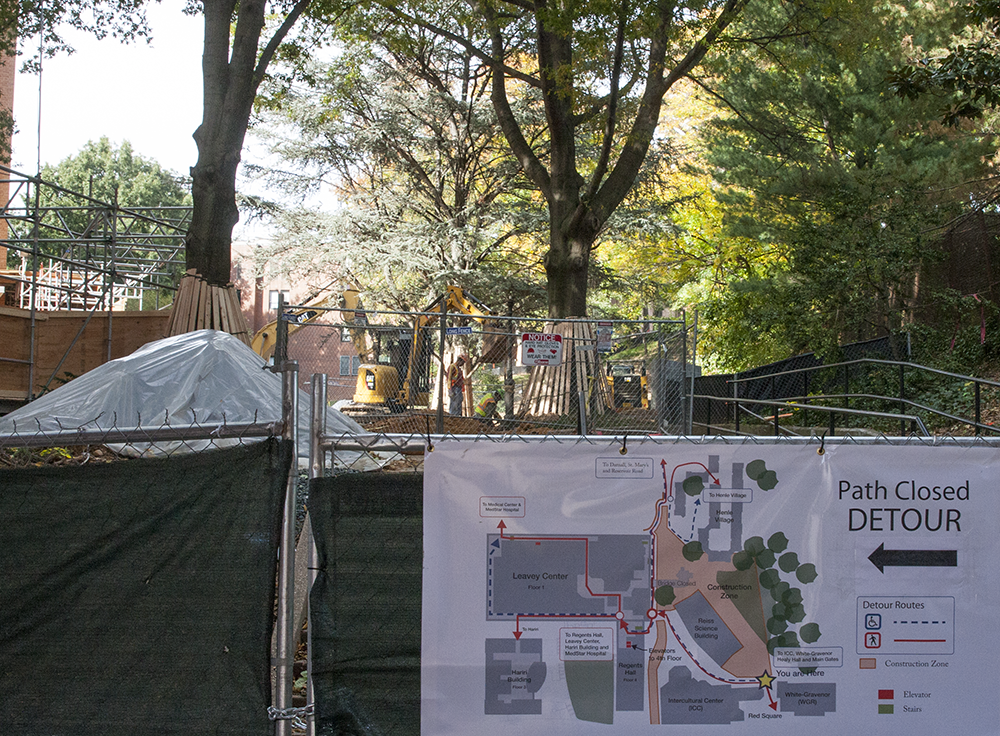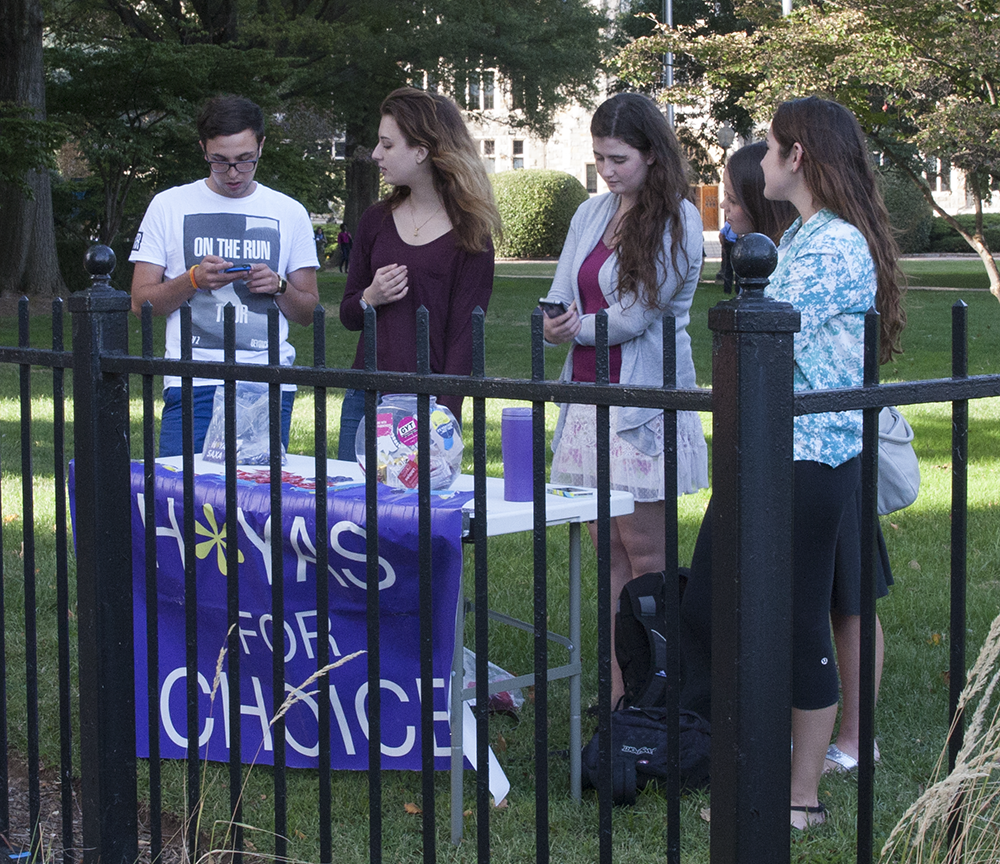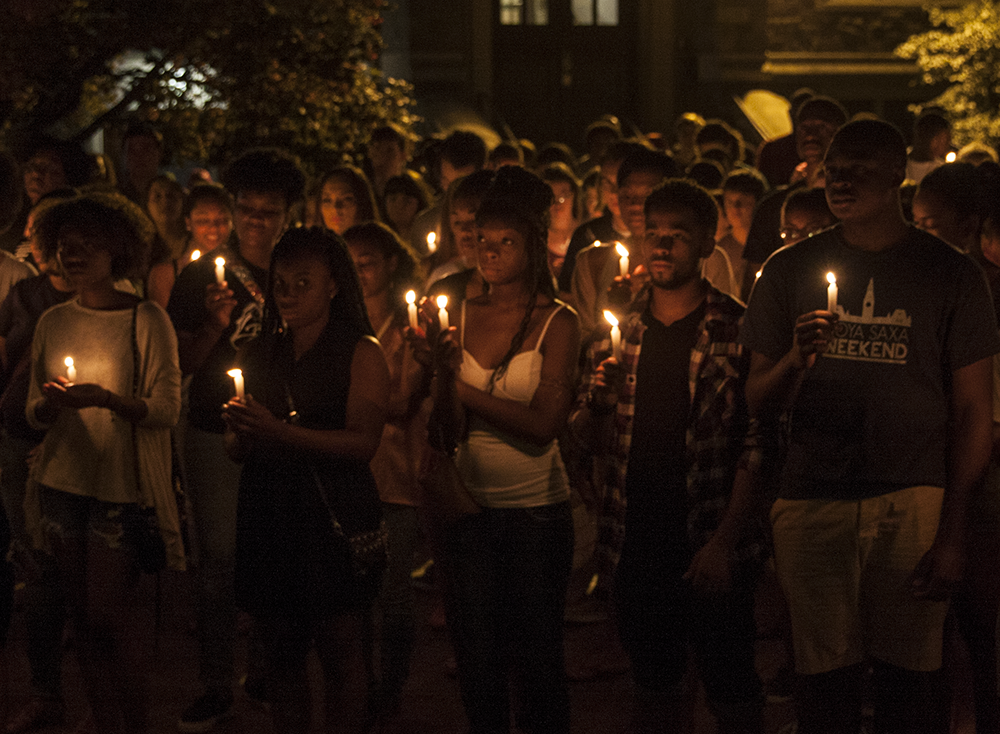This past academic year, Georgetown students struggled with national issues such as race relations, as well as personal issues of mental health and safety. While much of this dialogue took place in classrooms, Gaston Hall and Red Square, students also explored these themes through art. The following pieces highlight three of the most impressive, innovative and, above all, challenging works over the past school year. Created across three media — film, theater and dance — each work engaged in thoughtful and deep reflection, captivating audiences and provoking incisive conversations.
Student Feature Film Explores Mental Health Issues
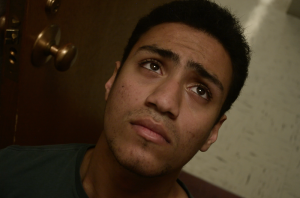
Jack Schmitt (COL ’15) depicts a chronic procrastinator in student film “11:59.”
Mesbah Uddin (SFS ’15) began his Georgetown journey like many other young students: he wanted to study political science, go into community organizing and then run for office.
After freshman year, Uddin had a change of heart. As a sophomore who knew nothing about making movies, Uddin helped a close friend edit a documentary about Islamophobia in the United States. It was during the taxing all-nighters in Gelardin Media Center that he discovered his love for filmmaking.
Uddin then sought to follow the advice of his favorite filmmaker Quentin Tarantino, who said, “If you want to make a movie, make it. Don’t wait for a grant, don’t wait for the perfect circumstances, just make it.”
Circumstances were hardly perfect as Uddin created his second full-length film, “11:59,” a film about the common Georgetown habit of procrastination and mental health issues on campus. The film required long hours of planning and organization of dozens of cast and crew members.
But after the months of filming, “11:59” premiered in spectacular fashion in Lohrfink Auditorium on April 11, a testament to the ability and dedication of Georgetown students in our arts community.
While the film’s inception lies with Uddin, it took an army of students from a variety of backgrounds to make the film happen.
“There was an original song done for this film by a student singer at Georgetown, there were 48 comic strip panels made by two animators, there was a leading actor who took it to the next level,” Uddin said.
According to Jack Schmitt (COL ’15), who played the lead of Sidney Philips, it was not always easy to get a crew of busy Georgetown students together.
“We find a way because it is something that we are all very passionate about and all wanted to see through,” Schmitt said.
The film showcased not only the talents of Georgetown students but also their willingness to tackle important issues on campus, as “11:59” explored mental health issues to begin dialogue on campus.
“All of us believe in the power of film to expose truths and tell stories that we didn’t know ourselves about society,” associate producer Nabeel Zaweil (SFS ’15) said.
Bryan Yuen
‘Killer Joe’ Provides Twist on Family Themes
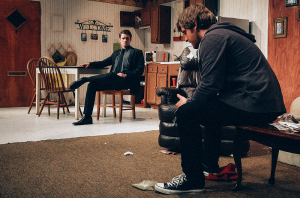
The Nomadic Theatre and Mask &
Bauble team up for the drama “Killer Joe.”
The Nomadic Theatre and Mask & Bauble Dramatic Society’s co-production of “Killer Joe” this semester reinforced that Georgetown theater is unafraid to venture into dark and unsettling territory.
The challenging drama is centered on a poor Dallas family. When the son of the family falls into financial trouble, he seeks out the help of a detective who moonlights as a contract killer in order to murder his mother and gain her life insurance money.
This premise speaks volumes about the themes present in this play, including family, ethics and poverty. By exploring these emotional topics through an extreme example of dark comedy, the student producers of “Killer Joe” were clearly challenging themselves and their audience. Greeted by a stern trigger warning that gave guidance on exiting the theater, audiences needed to be in a place to accept the play’s extremism to appreciate it. The Georgetown theater troupes were ambitious enough to take on the performance despite knowing that many would be unable to stomach the full production.
Most impressively, the production confronted traditional subjects such as the notion of family, but shifted the way in which viewers consider them. The situations that the family in “Killer Joe” are confronted with are often grotesque. But this intense and at times absurd aspect of the play is where its strengths lie, as these extreme situations are simply magnified reflections of our feelings. By pushing these feelings to the limit, “Killer Joe” was better equipped to explore them.
“Killer Joe” was an intense and impressive showing by Nomadic and Mask & Bauble that left audiences speechless and reflective. The choice was bold and marked an interesting and exciting shift in the ambition of the theater boards, which should continue in the coming year.
Michael Fiedorowicz
Discussion of Race Combines Dance, Theater
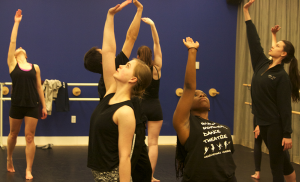
Black Movements Dance Theatre used a variety of styles in their spring show.
Black Movements Dance Theatre’s spring show, “Truth Be Told,” performed on Feb. 27 and 28, aimed to exemplify the themes of equality, struggle, resistance, love and, as the title suggests, personal and universal truths.
As part of the celebration of Black History Month, “Truth Be Told” served its mission in becoming more than a dance showcase; it truly was an experience of theater.
The show focused on portraying race relations in the form of dance. This depiction, inspired by Martin Luther King Jr., was startlingly relevant amid the corresponding national political atmosphere after protests over police brutality broke out in the wake of the deaths of Michael Brown and Eric Garner.
“I thought that certain pieces of the show highlighted beautiful moments of struggle and passion that epitomize the fight for racial justice and equality,” Stephanie Palencia (COL ’15), an audience member who formerly dancer in the group, said.
BMDT uses a range of dance forms in order to tell stories. In “Truth Be Told,” dancers explored a variety of styles, from lyrical to modern dances, tap dances and pieces based in traditional African dance. The dancers in BMDT come from diverse backgrounds of style and experience. However, the dances, choreographed by students and professionals alike, highlighted unity instead of accentuating differences.
“BMDT is passion. Although their dancers range from just beginning to advanced, BMDT never fails to put on a show that resonates with the audience on an emotional level. I always love watching these dancers perform, and being a former member of BMDT, I know just how much passion and commitment it takes to execute some of these dances,” Palencia said.
Though dance can be an intimidating medium of art, BMDT’s work at combining theatre with dance aims to attract people with varied backgrounds, while exploring issues of national significance in a relatable form.
“We are working to expose the truth in different ways,” BMDT Assistant Director Raquel Rosenbloom (COL ’16) said in February (“Social Justice Inspires Dance Showcase,” B1, The Hoya, Feb. 27). “[We have] a piece that is all about being in the truth and resisting the truth.”
Katherine Pietro


